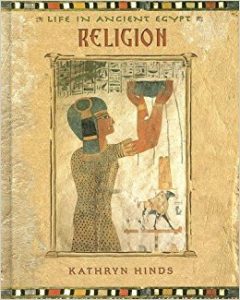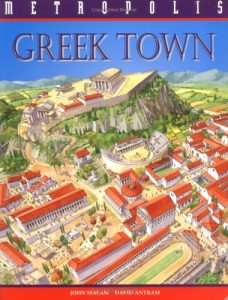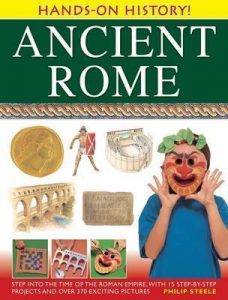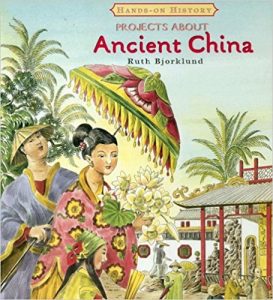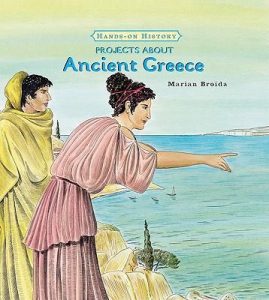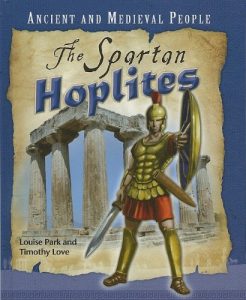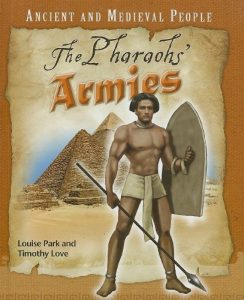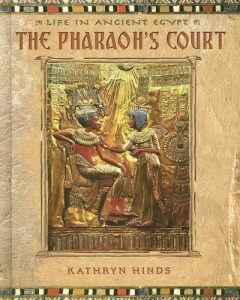 “Describes the daily life of the upper classes during the New Kingdom period of ancient Egypt, from about 1550 BCE to about 1070 BCE, including the structure of society, the differing roles of men and women, and what it was like to be a child in that era”–Provided by publisher.
“Describes the daily life of the upper classes during the New Kingdom period of ancient Egypt, from about 1550 BCE to about 1070 BCE, including the structure of society, the differing roles of men and women, and what it was like to be a child in that era”–Provided by publisher.
Ancient Civilizations
Religion (Life in Ancient Egypt)
Tutankhamun
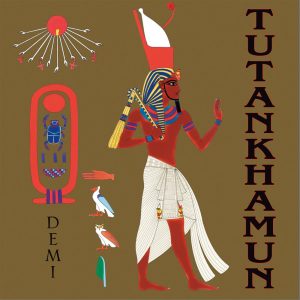 After thirty-two centuries of lying hidden in the Egyptian Valley of the Kings, King Tutankhamun’s sacred, royal tomb was discovered by a British archaeologist, and Tut’s story became known throughout the world. Demi sets King Tutankhamun’s life in the context of the religious beliefs of his ancestors. Born to a pharoah who had the revolutionary idea that all of Egypt must worship only one god, Tut ascended the throne and restored religious freedom to the Upper and Lower kingdoms. He allowed his subjects to worship either the one god, Aten, of his father or the many shapes and forms of the sun god, Amun, whom they had worshiped since ancient times. Using research that includes the artifacts in King Tutankhamun’s tomb, Demi shares the rich details of the king’s life, from ostrich and lion hunts, to the challenges of ruling his Kingdom. Demi’s storytelling skills and magnificent artwork, inspired by Egyptian line in paintings, architecture, sculpture, and jewelry, reveal the life of a remarkable king who has been watching us “across a span of more than 3,000 years.”
After thirty-two centuries of lying hidden in the Egyptian Valley of the Kings, King Tutankhamun’s sacred, royal tomb was discovered by a British archaeologist, and Tut’s story became known throughout the world. Demi sets King Tutankhamun’s life in the context of the religious beliefs of his ancestors. Born to a pharoah who had the revolutionary idea that all of Egypt must worship only one god, Tut ascended the throne and restored religious freedom to the Upper and Lower kingdoms. He allowed his subjects to worship either the one god, Aten, of his father or the many shapes and forms of the sun god, Amun, whom they had worshiped since ancient times. Using research that includes the artifacts in King Tutankhamun’s tomb, Demi shares the rich details of the king’s life, from ostrich and lion hunts, to the challenges of ruling his Kingdom. Demi’s storytelling skills and magnificent artwork, inspired by Egyptian line in paintings, architecture, sculpture, and jewelry, reveal the life of a remarkable king who has been watching us “across a span of more than 3,000 years.”
Greek Town: Metropolis
Projects about Ancient Rome (Hands-On History)
Projects about Ancient China (Hands-On History)
Projects about Ancient Greece (Hands-On History)
The Spartan Hoplites (Ancient And Medieval People)
The Pharoah’s Armies (Ancient And Medieval People)
The Roman Gladiators (Ancient And Medieval People)
An introduction to the history and lifestyle of Roman gladiators.

